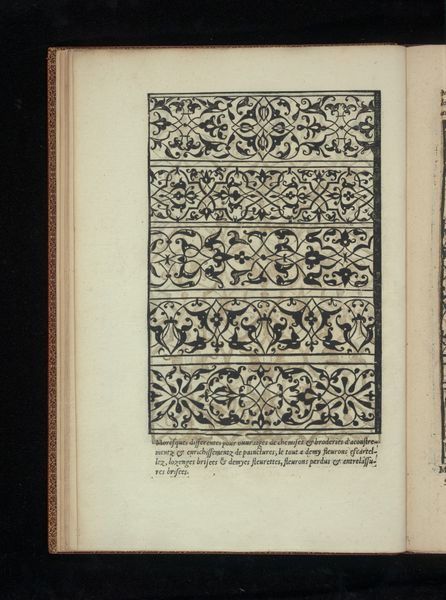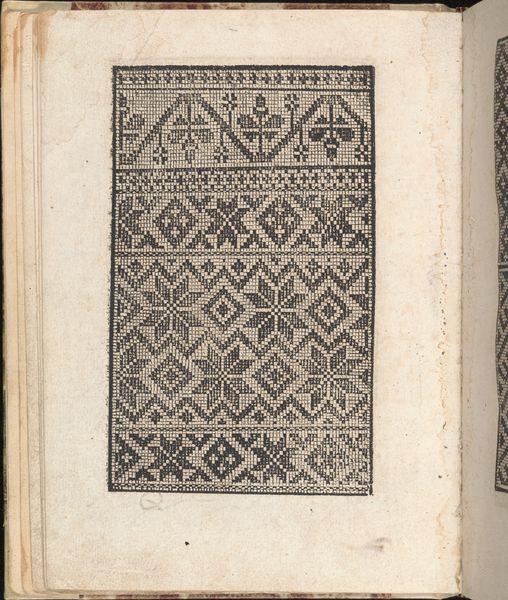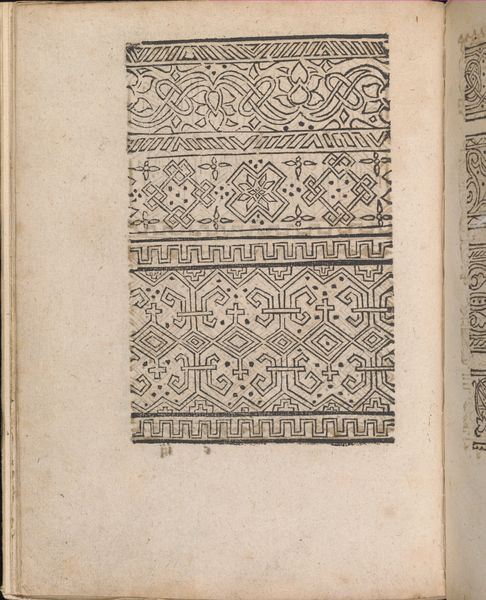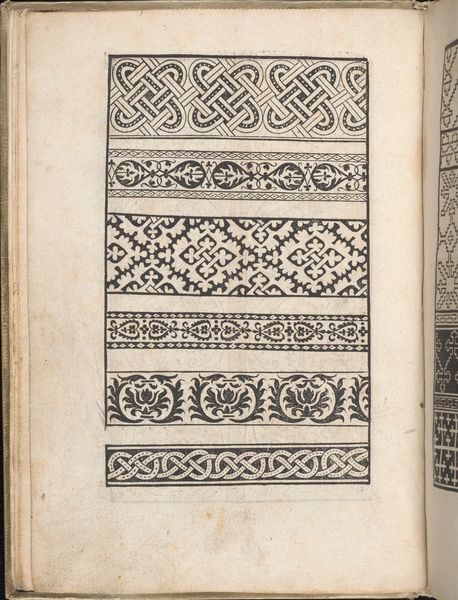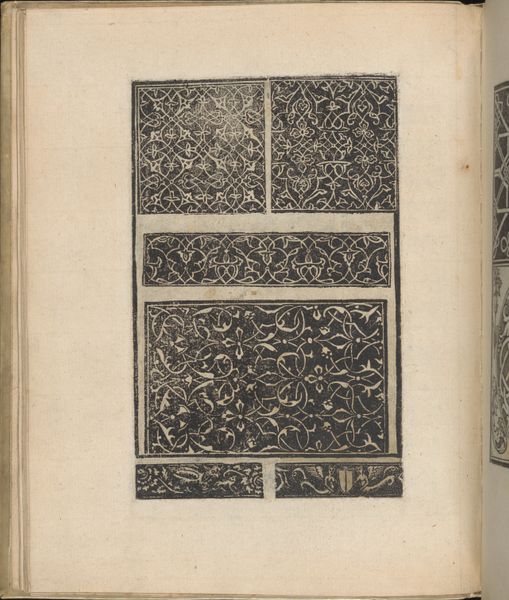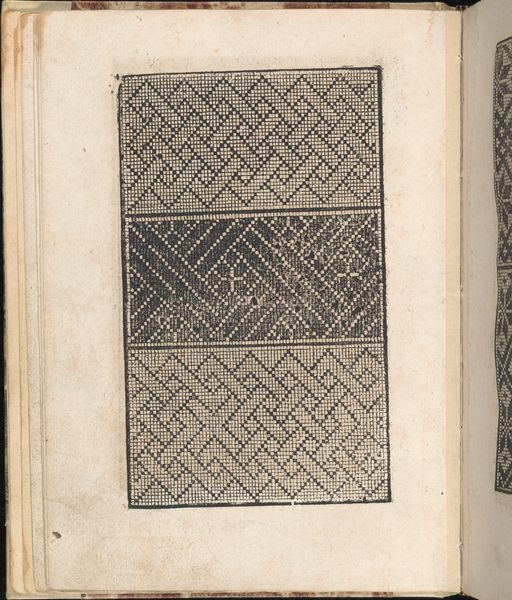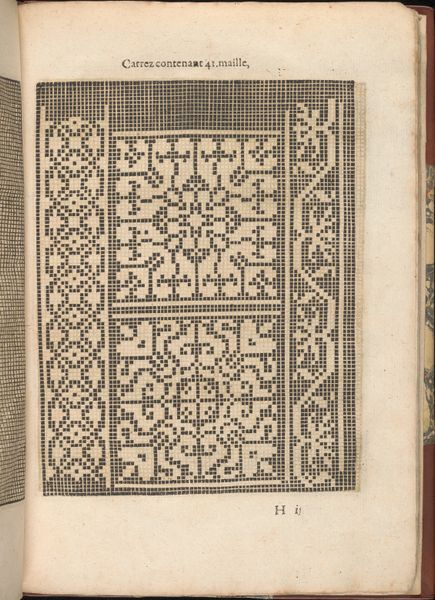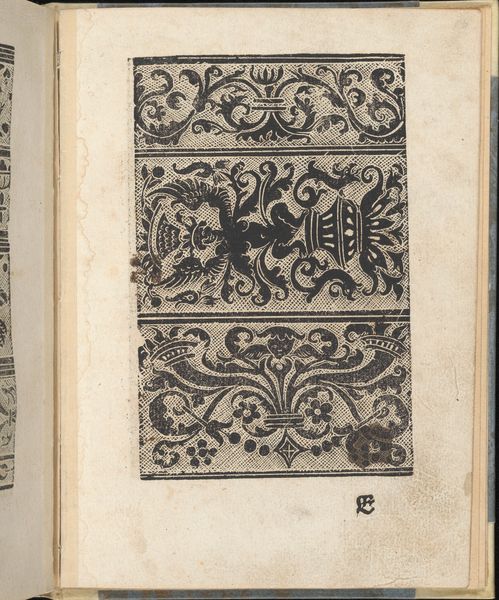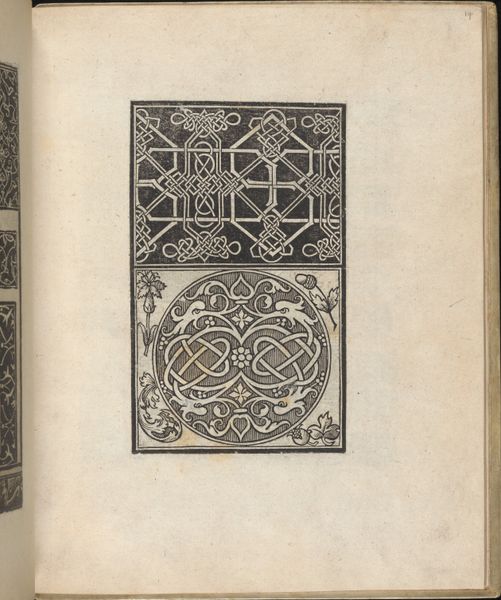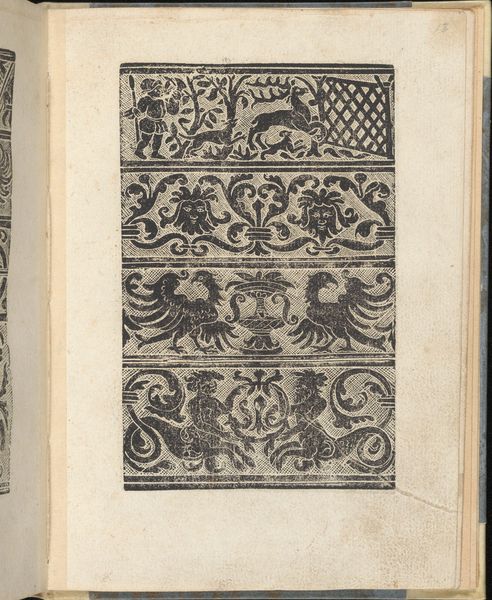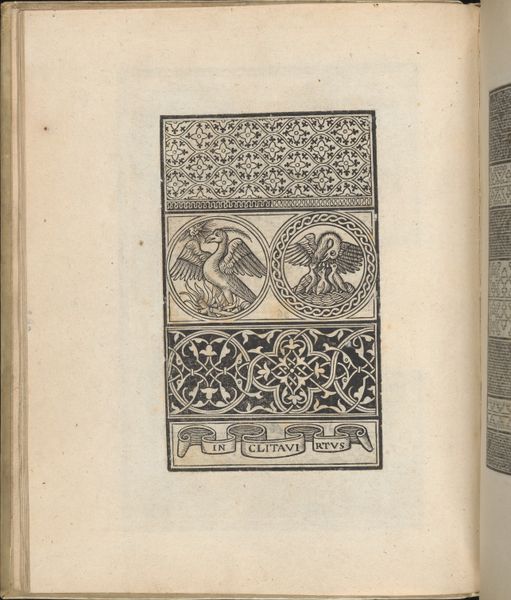
Ein ney Furmbüchlein, Page 11, recto 1520 - 1530
0:00
0:00
drawing, print
#
drawing
#
aged paper
#
toned paper
#
homemade paper
#
ink paper printed
# print
#
book
#
sketch book
#
flower
#
personal sketchbook
#
pen and pencil
#
sketchbook drawing
#
sketchbook art
#
watercolor
Dimensions: 7 7/8 x 6 1/8 in. (20 x 15.5 cm)
Copyright: Public Domain
Curator: We’re looking at a page from Johann Schönsperger the Younger's "Ein ney Furmbüchlein," created sometime between 1520 and 1530. It's a print, housed in the collection of the Metropolitan Museum of Art. Editor: The first thing I notice is its tight, rhythmic nature; almost like a piece of woven fabric or an architectural frieze compressed onto a single page. The monochrome enhances the sense of detailed restraint. Curator: Absolutely. These weren’t designs conceived in isolation; pattern books like these facilitated the transmission of visual vocabulary. Floral motifs, interlace patterns… all readily adopted and adapted across various crafts. Think textiles, metalwork. Editor: The recurring motifs definitely give it a symbolic depth beyond mere decoration. The stars, for example, or those interlocked circles... they speak to enduring themes of guidance and interconnectedness. It is such a satisfying example of symmetrical construction. Curator: Right. Stars historically guide journeys. These interlace symbols were extremely common in the 16th century. This points to more profound connections, relationships...a community of makers and consumers tied together by shared values. The formal rigidity and limited subject matter suggest clear rules about their deployment and understanding. Editor: And technically, one must admire how the artist employs the contrast of the black lines against the toned paper to define the structure of the work so crisply. Look at the organic feel achieved in each level even while constrained by a hard lined form. Curator: I am particularly fascinated by the way even minor deviations would potentially indicate an attempt at individuality by whoever was translating this sketch. They would be interpreting shared language through personal expression. That blend, really, embodies how collective identity gets reshaped through creative labor. Editor: This piece really highlights the beauty and complexities found within restriction, inviting us to closely examine the subtle power of early printmaking and surface embellishment. Curator: Exactly. And how objects can embody much more than what we immediately perceive; speaking silently of a culture’s intertwined stories.
Comments
No comments
Be the first to comment and join the conversation on the ultimate creative platform.
